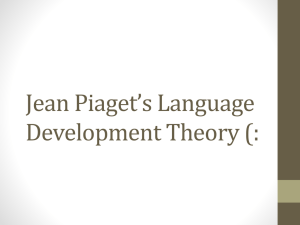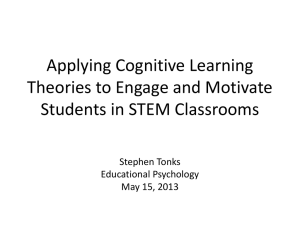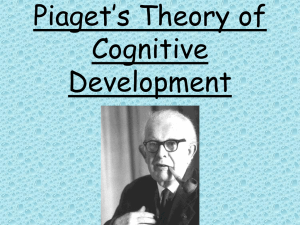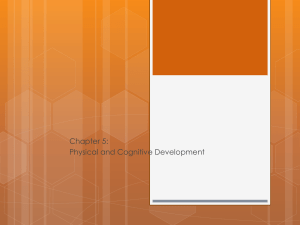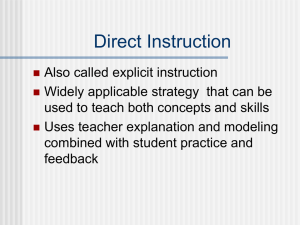developmental-psychology-6
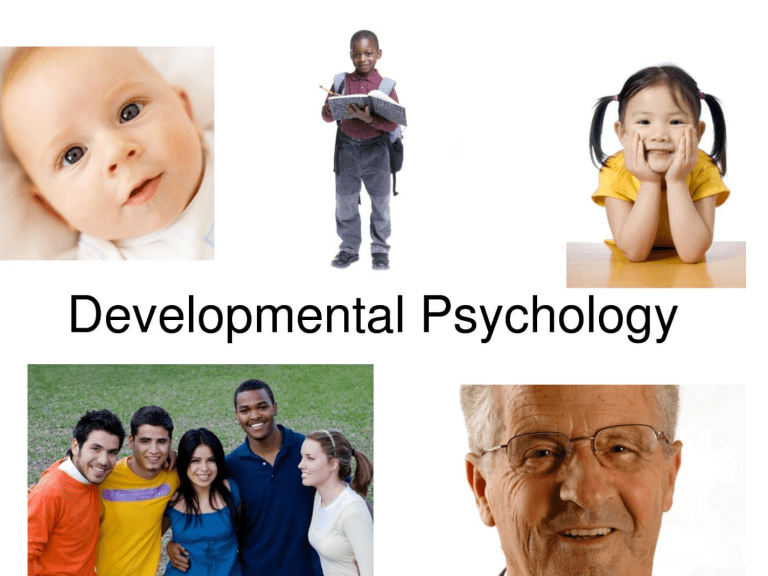
a
Developmental Psychology
Introduction
• Developmental psychology is the study of how and why people change over time in the way they behave, think, and relate to others.
• Developmental psychology focuses on developmental themes such as identity, attachment and adolescence.
• It is important to gain an understanding of the extent to which early experience may
influence later development and if there are
critical periods in development.
• Knowledge about the influence of biological, social and cultural factors in people’s lives is helpful not only for families but also in
childcare and education to create good opportunities for children and young people all over the world.
• Controversies related to developmental psychology include the extent of the impact of
early experiences and why some children
seem to be more resilient than others after stressful experiences in childhood.
• In recent years knowledge about resilience has been used to develop programmes that can increase resilience.
Learning Outcomes
• General framework (applicable to all topics in the option)
• To what extent do biological, cognitive and sociocultural factors influence human development?
• Evaluate psychological research (that is, theories and/or studies) relevant to developmental psychology.
Learning Outcomes 6.1
Cognitive development 6.1
• Evaluate theories of cognitive development
(for example, Piaget, Bruner, Vygotsky, brain
development theories).
• Discuss how social and environmental variables (for example, parenting, educational
environment, poverty, diet) may affect cognitive development.
Research used in Developmental
Psychology
• Observation
• Interviews
• Laboratory experiments
• Case study
• Could you describe them? Evaluate them?
Research used in Developmental
Psychology
• Want to study the child’s physical and social context, cultural factors (child-rearing practices, customs) – the child’s ecology
(developmental niche)
• Longitudinal research is often used – describe it and give + and –
• Counter act some – use cross-sectional design
Cognitive Development
• Heated debate: Nature vs. Nurture!
Cognitive Development
• Biological development (brain)
• Cognitive (Piaget’s)
• Sociocultural (Vygotsky’s)
Biological Development (brain)
• Some universal characteristics (inborn reflexes usch as sucking and grasping)
• How does our brain develop (from a biological perspective)
• CNS
• Synaptic growth – most significant in the year of life
• neuroplasticity
Biological Development (brain)
• The brain’s activity increases with synaptic growth
• Support: Rosenzweig and Bennet 1972
• Correlational research (no cause and effect)
Cognitive Development
• Piaget’s theory
• Lived: 1896 –1980
Swiss developmental psychologist
• Based his theory on observations and openended interviews
• Believed that children and adults think differently
• Formal logic is the highest (last stage) in our development
Cognitive Development
• There are two major aspects to his theory: the process of
coming to know and the stages we move through as we gradually acquire this ability.
• Process of Cognitive Development. As a biologist,
Piaget was interested in how an organism adapts to its environment (Piaget described as intelligence.) Behavior
(adaptation to the environment) is controlled through
mental organizations called schemata (schema) that the individual uses to represent the world and designate action. This adaptation is driven by a biological drive to obtain balance between schemes and the environment
(equilibration).
• Piaget hypothesized that infants are born with schema
operating at birth that he called "reflexes." In other animals, these reflexes control behavior throughout life. In human beings as the infant uses these reflexes to adapt to the environment, these reflexes are quickly replaced with constructed schemata.
Adaption (learning) take two forms:
• Piaget described two processes used by the individual in its attempt to adapt: assimilation and
accomodation. Both of these processes are used though out life as the person increasingly adapts to the environment in a more complex manner.
• Assimilation is the process of using or transforming the environment so that it can be placed in preexisting cognitive schemas. Accomodation is the process of changing cognitive structures in order to accept something from the environment. Both processes are used simultaneously and alternately throughout life.
• An example of assimilation would be seeing a dog for the first time will be categorized as animal. An example of accomodation would be seeing or learning something completely new – changing ones stereotypes
Stages of Cognitive Development. Piaget identified four stages in cognitive development (universal theory)
• Sensorimotor stage (Infancy 0-2 years)
• In this period intelligence is demonstrated through motor activity without the use of symbols.
• Knowledge of the world is limited (but developing) because its based on physical interactions / experiences.
• Children acquire object permanence at about 8 months of age (memory). Physical development (mobility) allows the child to begin developing new intellectual abilities. Some symbollic (language) abilities are developed at the end of this stage.
Pre-operational stage
• (Toddler and Early Childhood 2-7 years). In this period intelligence is demonstrated through the use of symbols, language use develops, and memory and imagination are developed, but thinking is done in a nonlogical, nonreversable manner. Egocentric thinking predominates
• http://www.youtube.com/watch?v=9YWlfRTBhAQ#t=16
Concrete operational stage
• (Elementary and early adolescence 7-11). In this stage (characterized by 7 types of conservation: number, length, liquid, mass, weight, area, volume), intelligence is demonstrated through logical and systematic manipulation of symbols related to concrete objects. Operational thinking develops
Egocentric thought diminishes.
• http://www.youtube.com/watch?v=j4lvQfhuNmg
Formal operational stage
• (Adolescence and adulthood 11-15). In this stage, intelligence is demonstrated through the logical use of symbols related to abstract concepts.
• Early in the period there is a return to egocentric thought. Only 35% of high school graduates in industrialized countries obtain formal operations; many people do not think formally during adulthood.
• http://www.youtube.com/watch?v=D9BoAn9lRqE
research
• Piaget and Inhelder 1956 – the mountain task
• Hughes 1975 – variation of that study using policemen and a doll
• Piaget’s conservation task (classic): the glasses of water
• Li et al. 1999: conservation task but in China
(p.189)
Conclusion
• Many pre-school and primary programs are modeled on Piaget's theory, which, as stated previously, provided part of the foundation for constructivist learning. Discovery learning and supporting the developing interests of the child are two primary instructional techniques. It is recommended that parents and teachers challenge the child's abilities, but NOT present material or information that is too
far beyond the child's level. It is also recommended that teachers use a wide variety of concrete experiences to help the child learn (e.g., use of manipulatives, working in groups to get experience seeing from another's perspective, field trips, etc).
• http://www.youtube.com/watch?v=TRF27F2bn-A
Evaluate Piaget’s theory
• Use the handout p 117:
• The theory
• The methods
• Application
Sociocultural Development
• Lev Vygotsky
• Russian psychologist
• 1896-1934
• The major theme of Vygotsky's theoretical framework is that social interaction plays a
fundamental role in the development of cognition
• Culture provides knowledge, and it teaches children what to think and how to think
(notice the ToK link??)
• Interaction and cultural tools
• A second aspect of Vygotsky's theory is the idea that the potential for cognitive development depends upon the
"zone of proximal development" (ZPD): a level of development attained when children engage in social behavior.
• Full development of the ZPD depends upon full social interaction. The range of skill that can be developed with adult guidance or peer collaboration exceeds what can be attained alone.
Task
• If you would use and apply Vigotsky’s theory into today’s schools (education system), society – what would that look like?
do we use it?
• How one teaches today
• Mentor
• Mentor programmes (one called mentor)
• Free school (public) so everyone can attend
Videos
• http://www.youtube.com/watch?v=hx84hi3w8U#t=12
• http://www.youtube.com/watch?v=rX8lRh1u5 iE
Research
• Cole and Scribner 1974 can be used as support of Vykotsky’s theories.
Compare Vygotsky vs. Piaget
1: Vygotsky places more emphasis on culture
affecting/shaping cognitive development - this contradicts Piaget's view of universal stages and content of development (Vygotsky does not refer to stages in the way that Piaget does).
2: Vygotsky places considerably more emphasis on social
factors contributing to cognitive development (Piaget is criticized for underestimating this).
3: Vygotsky places more (and different) emphasis on the
role of language in cognitive development (again Piaget is criticized for lack of emphasis on this).
http://www.youtube.com/watch?v=Axi7xctulbM
Create a mind-map answering this LO
• To be handed in
• http://childpsych.umwblogs.org/development al-theories/jean-piaget/stages-of-cognitivedevelopment/



